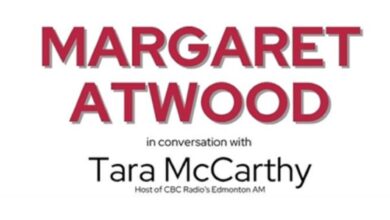‘Heaven:’ The promised land is as you make it
A performance questioning ideals of the Canadian dream
 Supplied: Citadel Theatre by Janice Saxon
Supplied: Citadel Theatre by Janice SaxonHow do you uproot yourself and take on an odyssey of immigration to a new land? Is it due to social aspirations, or more concerning matters such as famine, war, and discrimination? Heaven is a play about the Black pioneer experience and realities about a supposed “Canadian Dream.” More specifically, this is about the impact of Charlotte Williams from Ontario and her impact in Amber Valley, and the community as a whole.
Charlotte moves on to the promise of a teaching job offered by Ezra Jones, a local with influence in the community. What follows is a tale of the largely unseen influence of Black settlers within western Canadian history, and a fond remembrance of settlements like Amber Valley, where the story takes place, and the people of colour who lived in them.
In Heaven, writer Cheryl Foggo describes much of the history in the Black pioneer community as a migration from the racially segregated South of the United States. Migration led to the end point of the Underground Railroad, where Harriet Tubman made her residence in St. Catherines, as described in this interview with Foggo. Known for her documentary film John Ware Reclaimed, she has made a career in depicting the Black experience in Western Canada.
As director Patricia Darbasie describes, this play aims to make the triumphs and struggles of the Black pioneer community visible.
“The story itself is based on an actual location: …the height of Amber Valley [in] the 30s. I don’t think it’s a history that most Albertans know,” Darbasie said.
“What are we trying to do? We’re trying to introduce you to some cool folks who are part of our Canadian history fabric that most people are unaware of. It’s a really good story. It’s this two for one in terms of a history lesson,” she said. “The characters are fictional but the surroundings, the setting, and all that [are real]. [We] also hope that people Google or write down some stuff about this little-known history.”
This highly episodic play, from a veteran author, director, and television screenwriter showcases the author’s strengths and takes full advantage of this background to focus solely on two characters.
There are largely only visual aids and props to suggest different spatial temporalities around the main set of a teacher’s living quarters near the school. Despite being minimalist, and thus having little room for error, the set is also well-designed, with tree branches framing the top of the stage, and strategic lighting conveying much of the feel of Alberta. Sound design is also effectively employed to make the risks of frontier life, such as wildlife, absorb the audience in the scene. Strong storms, surprise dumps of snow, and window breakings are just a few challenges Charlotte must overcome. The performances by Helen Belay as Charlotte Williams and Anthony Santiago as Ezra Jones were excellent, despite theatre limitations.
Charlotte’s need to work as a teacher is the result of hard times, with Ezra desperate for a qualified instructor to keep the community he and his deceased wife helped to build alive. The tension between these two strong personalities, with strong opinions regarding race relations, the welfare of the children and the community, and Charlotte’s role as an initial outsider help make the initial antagonistic relationship compelling. Charlotte’s strength in aiding the newly minted sports team and her devotion to the school, despite the new frontiers often being dangerous, earn the trust of Ezra. This makes the increasing shows of affection by Ezra a wonderful payoff, and his increasing closeness to Charlotte’s secrets palatable.
When asked about the play’s ability to be read as a settler experience story or more distinctly as a Black settler story — and which reading was of greater prominence — Darbasie expanded on the intricacies of the play.
“I think it’s distinct in that the simpler experience is brutal in that sense of trying to break the land [and] trying to grow crops … that’s the real settler story,” Dabarsie said.
“How do you live off of the land, in a land that is so changeable, beautiful, and harsh? It’s specific to Black or African American pioneers. I think some of the isolation and the racism is part of the fabric,” she explained. “At that time, it [was] certainly better here in Canada than it was in the States, but [racism] isn’t non-existent. I think that if you talk to any immigrants [they’ll agree] … It’s all those growing pains that [are] part of history.”




